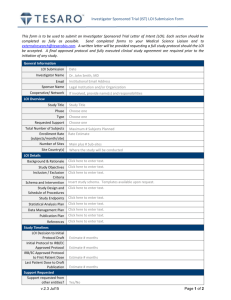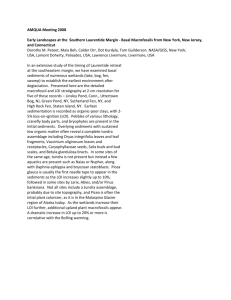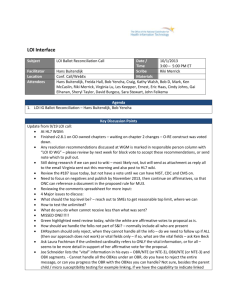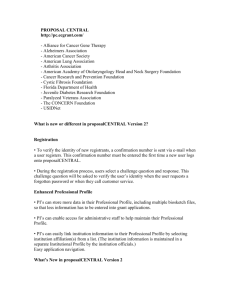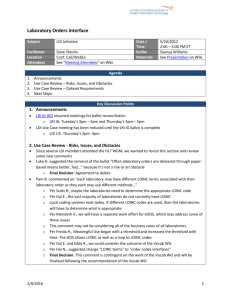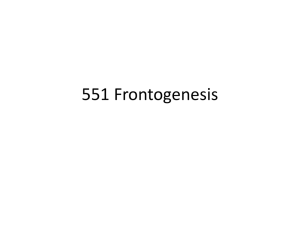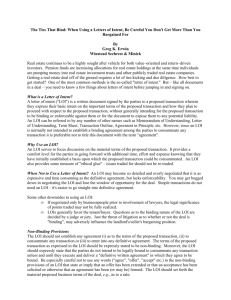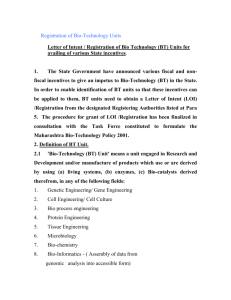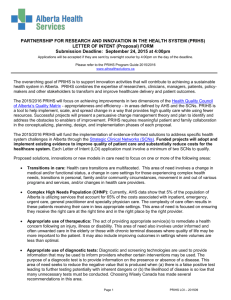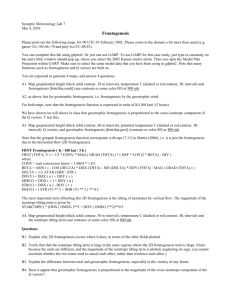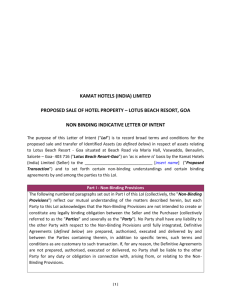Derived Units
advertisement
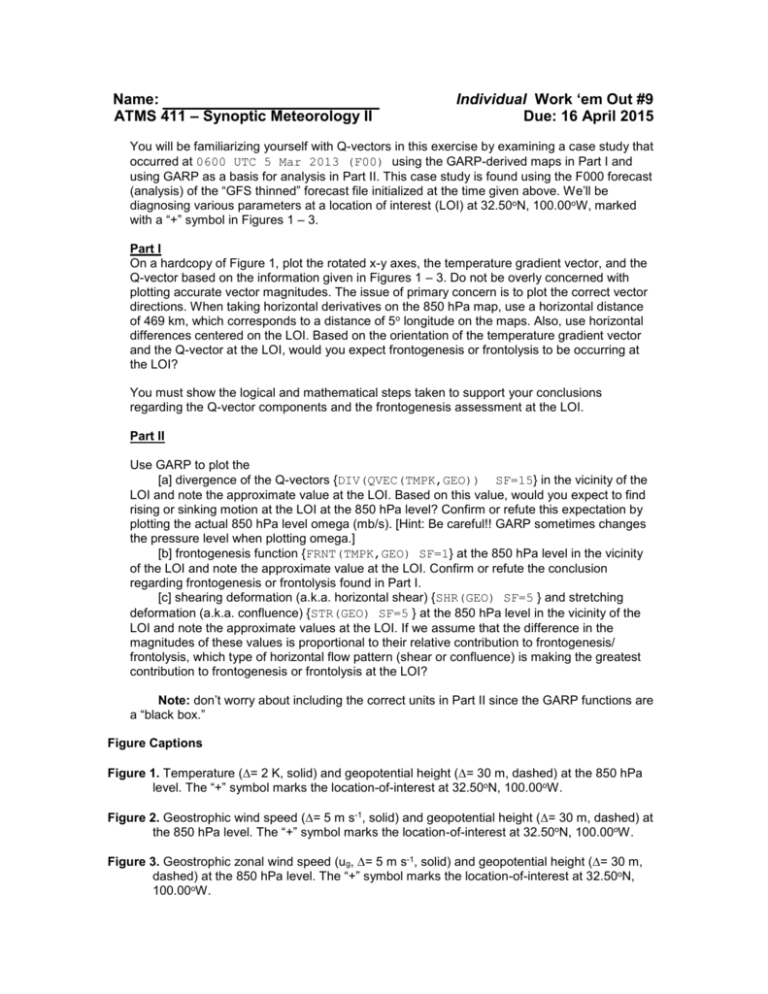
Name:
ATMS 411 – Synoptic Meteorology II
Individual Work ‘em Out #9
Due: 16 April 2015
You will be familiarizing yourself with Q-vectors in this exercise by examining a case study that
occurred at 0600 UTC 5 Mar 2013 (F00) using the GARP-derived maps in Part I and
using GARP as a basis for analysis in Part II. This case study is found using the F000 forecast
(analysis) of the “GFS thinned” forecast file initialized at the time given above. We’ll be
diagnosing various parameters at a location of interest (LOI) at 32.50oN, 100.00oW, marked
with a “+” symbol in Figures 1 – 3.
Part I
On a hardcopy of Figure 1, plot the rotated x-y axes, the temperature gradient vector, and the
Q-vector based on the information given in Figures 1 – 3. Do not be overly concerned with
plotting accurate vector magnitudes. The issue of primary concern is to plot the correct vector
directions. When taking horizontal derivatives on the 850 hPa map, use a horizontal distance
of 469 km, which corresponds to a distance of 5o longitude on the maps. Also, use horizontal
differences centered on the LOI. Based on the orientation of the temperature gradient vector
and the Q-vector at the LOI, would you expect frontogenesis or frontolysis to be occurring at
the LOI?
You must show the logical and mathematical steps taken to support your conclusions
regarding the Q-vector components and the frontogenesis assessment at the LOI.
Part II
Use GARP to plot the
[a] divergence of the Q-vectors {DIV(QVEC(TMPK,GEO)) SF=15} in the vicinity of the
LOI and note the approximate value at the LOI. Based on this value, would you expect to find
rising or sinking motion at the LOI at the 850 hPa level? Confirm or refute this expectation by
plotting the actual 850 hPa level omega (mb/s). [Hint: Be careful!! GARP sometimes changes
the pressure level when plotting omega.]
[b] frontogenesis function {FRNT(TMPK,GEO) SF=1} at the 850 hPa level in the vicinity
of the LOI and note the approximate value at the LOI. Confirm or refute the conclusion
regarding frontogenesis or frontolysis found in Part I.
[c] shearing deformation (a.k.a. horizontal shear) {SHR(GEO) SF=5 } and stretching
deformation (a.k.a. confluence) {STR(GEO) SF=5 } at the 850 hPa level in the vicinity of the
LOI and note the approximate values at the LOI. If we assume that the difference in the
magnitudes of these values is proportional to their relative contribution to frontogenesis/
frontolysis, which type of horizontal flow pattern (shear or confluence) is making the greatest
contribution to frontogenesis or frontolysis at the LOI?
Note: don’t worry about including the correct units in Part II since the GARP functions are
a “black box.”
Figure Captions
Figure 1. Temperature (= 2 K, solid) and geopotential height (= 30 m, dashed) at the 850 hPa
level. The “+” symbol marks the location-of-interest at 32.50oN, 100.00oW.
Figure 2. Geostrophic wind speed (= 5 m s-1, solid) and geopotential height (= 30 m, dashed) at
the 850 hPa level. The “+” symbol marks the location-of-interest at 32.50oN, 100.00oW.
Figure 3. Geostrophic zonal wind speed (ug, = 5 m s-1, solid) and geopotential height (= 30 m,
dashed) at the 850 hPa level. The “+” symbol marks the location-of-interest at 32.50oN,
100.00oW.

